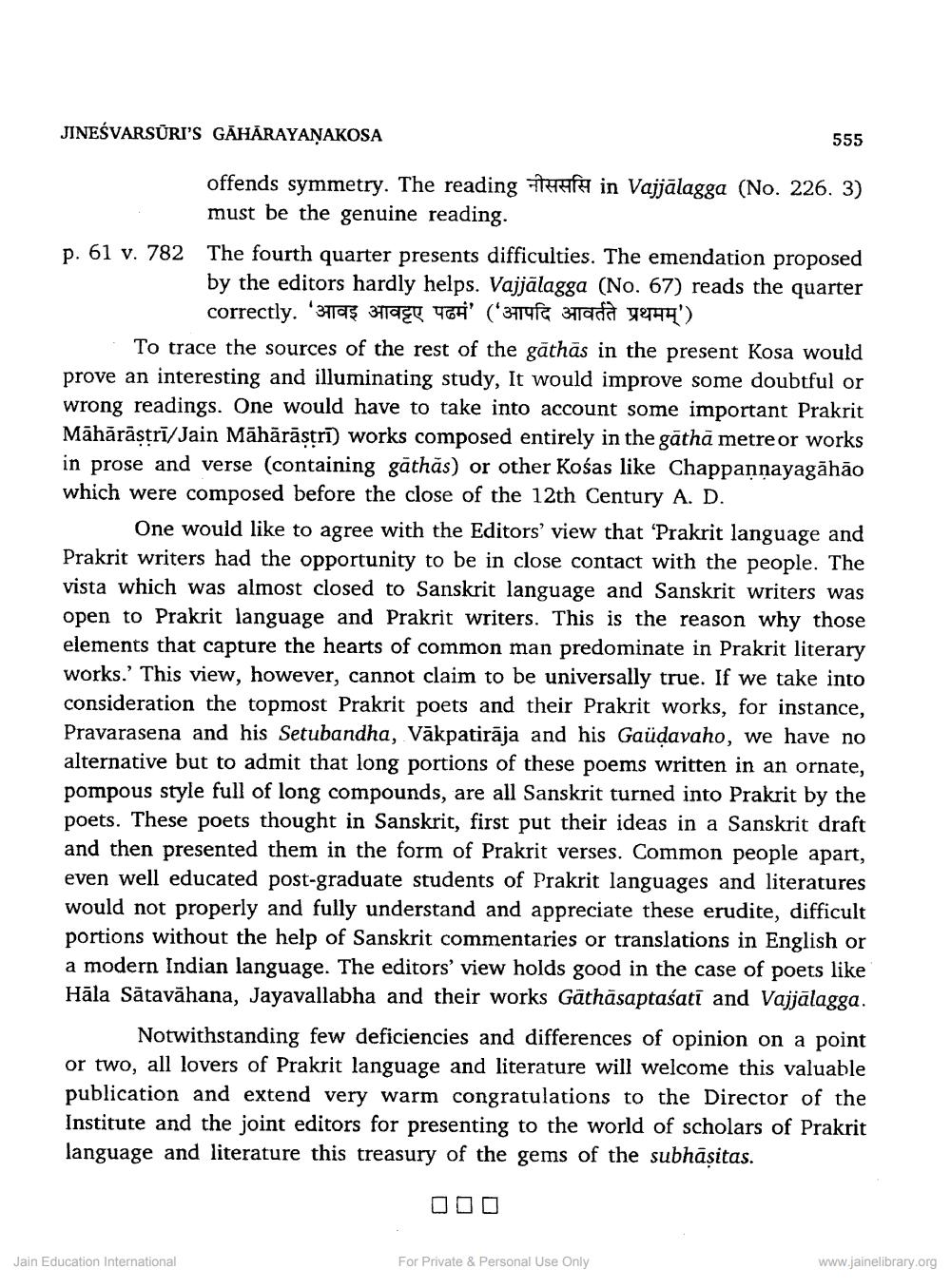________________ JINESVARSURI'S GAHARAYANAKOSA 555 offends symmetry. The reading HHA in Vajjalagga (No. 226. 3) must be the genuine reading. p. 61 v. 782 The fourth quarter presents difficulties. The emendation proposed by the editors hardly helps. Vajjalagga (No. 67) reads the quarter correctly. '31195 3119EUR 16'' (3414f& 341ada 4444') To trace the sources of the rest of the gathas in the present Kosa would prove an interesting and illuminating study, It would improve some doubtful or wrong readings. One would have to take into account some important Prakrit Maharastri/Jain Maharastri) works composed entirely in the gatha metreor works in prose and verse (containing gathas) or other Kosas like Chappannayagahao which were composed before the close of the 12th Century A. D. One would like to agree with the Editors' view that 'Prakrit language and Prakrit writers had the opportunity to be in close contact with the people. The vista which was almost closed to Sanskrit language and Sanskrit writers was open to Prakrit language and Prakrit writers. This is the reason why those elements that capture the hearts of common man predominate in Prakrit literary works.' This view, however, cannot claim to be universally true. If we take into consideration the topmost Prakrit poets and their Prakrit works, for instance, Pravarasena and his Setubandha, Vakpatiraja and his Gaudavaho, we have no alternative but to admit that long portions of these poems written in an ornate, pompous style full of long compounds, are all Sanskrit turned into Prakrit by the poets. These poets thought in Sanskrit, first put their ideas in a Sanskrit draft and then presented them in the form of Prakrit verses. Common people apart, even well educated post-graduate students of Prakrit languages and literatures would not properly and fully understand and appreciate these erudite, difficult portions without the help of Sanskrit commentaries or translations in English or a modern Indian language. The editors' view holds good in the case of poets like Hala Satavahana, Jayavallabha and their works Gathasaptasati and Vajjalagga. Notwithstanding few deficiencies and differences of opinion on a point or two, all lovers of Prakrit language and literature will welcome this valuable publication and extend very warm congratulations to the Director of the Institute and the joint editors for presenting to the world of scholars of Prakrit language and literature this treasury of the gems of the subhasitas. 000 Jain Education International For Private & Personal Use Only www.jainelibrary.org




